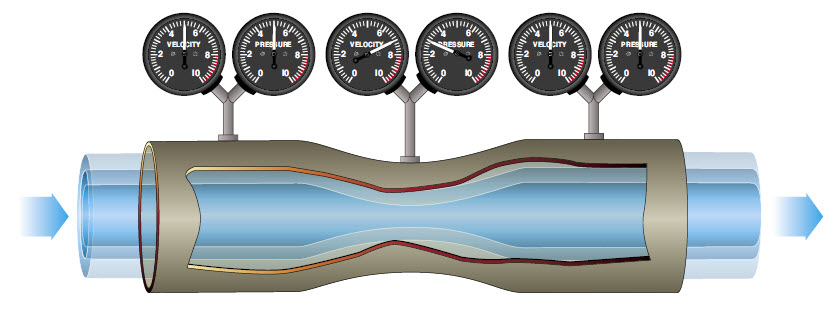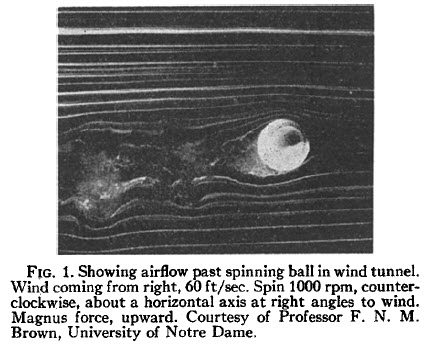Bernoulli’s Principle of Pressure states that the pressure of a moving fluid (liquid or gas) varies with its speed of motion (1). If the fluid’s speed increases, a drop in pressure will be seen. This principle is a key component of flight. It is used as a basis for the measurement of airspeed and for analyzing the airfoil’s ability to produce lift (1).
Magnus Effect

Magnus Effect about a Cylinder
The Magnus effect is an explanation of the force applied to an object when a fluid moves around the object in a circular motion. Looking at the image to the right, you can see that the air is flowing from left to right and the cylinder is rotating clockwise. As a result, the Magnus Force is directed upward as the fluid moves over the top of the cylinder. Both the fluid and the cylinder are flowing in the same direction at the top of the cylinder. Simple vector math would indicate that if both are flowing in the same direction, the velocity at the top would be greater. The following is an image of a baseball in a wind tunnel showing the real-life effect.
An Upward Lifting Force
By combining the Magnus Effect and Bernoulli’s Principle of pressure we can see how lift is produced by the wings of the airplane. The wing acts like a cylinder, creating a Magnus effect. In conjunction, the increase airflow over the top of the wing creates a low pressure area that also contributes to lift. We’ll talk more about airfoil design soon, but for now just know that those two principles are a critical component of flight.
- Pilot’s Encyclopedia of Aeronautical Knowledge, FAA-H-8083-25A.

